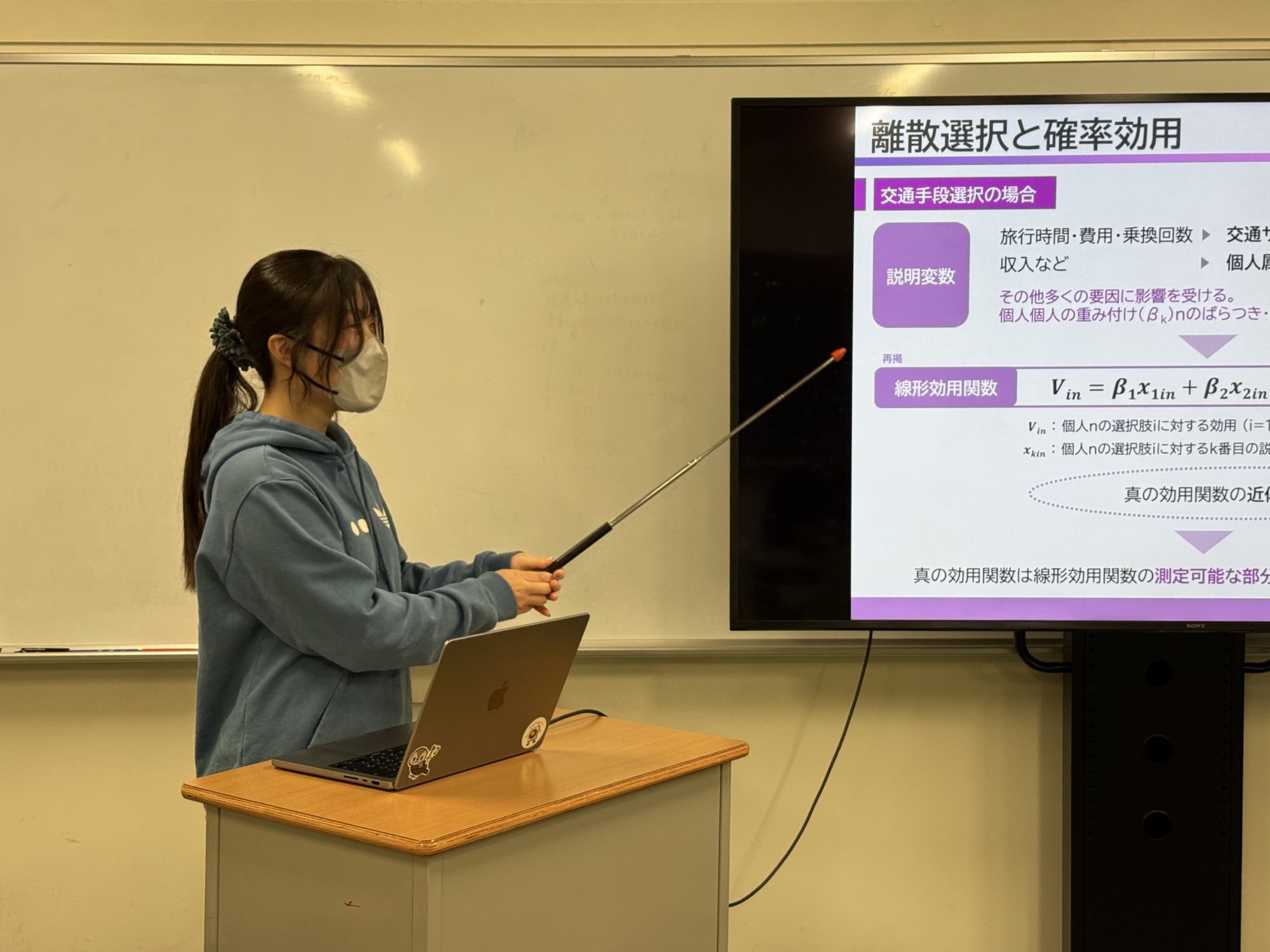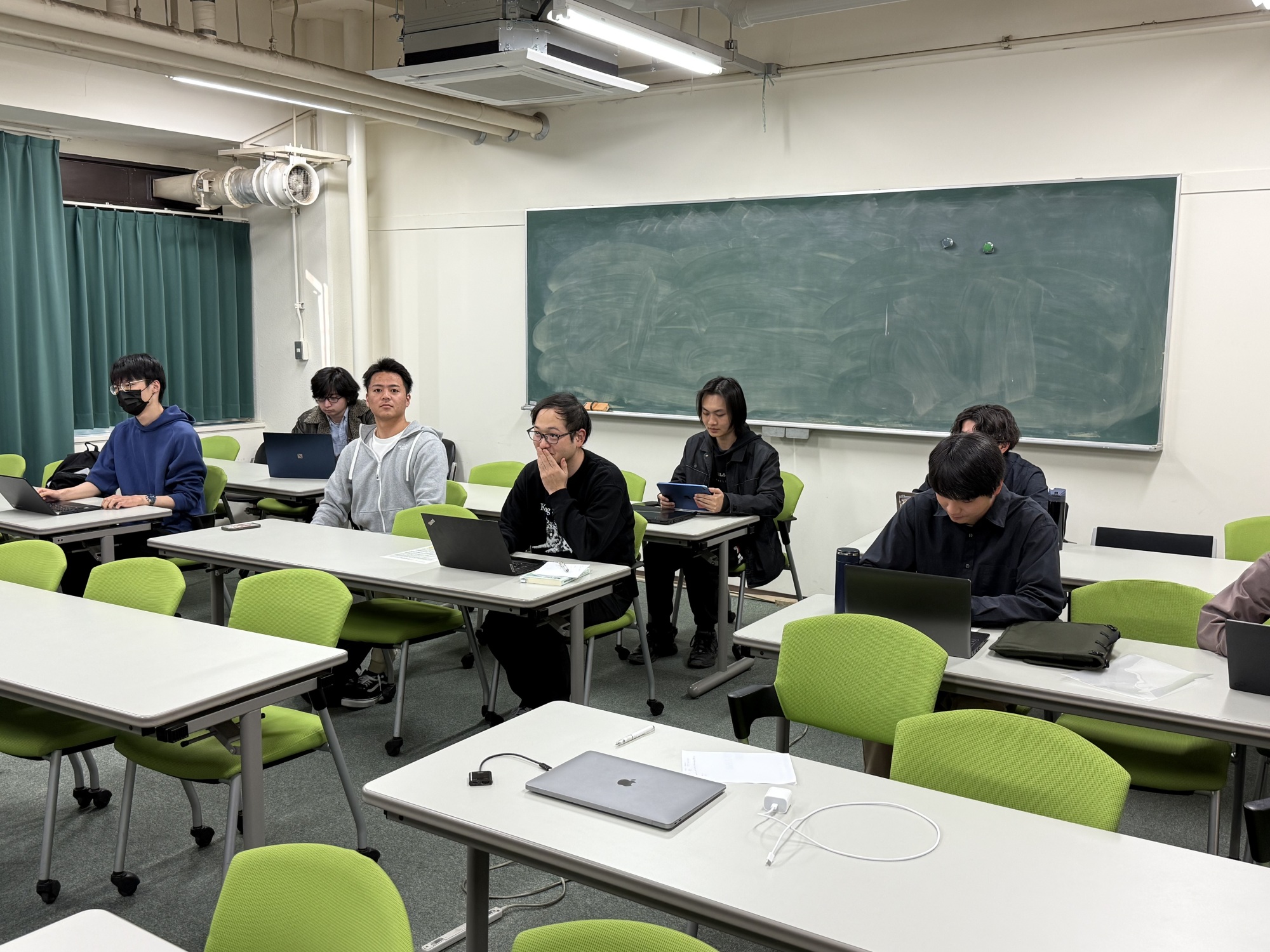

News
2025.04.08
2025年度の初回ゼミは、B4上杉さんとB4大野さんが担当しました!
今回のゼミは、離散選択モデルについて学ぶ理論ゼミの一つで、「交通行動の分析とモデリング(北村隆一・森川高行編著/佐々木邦明・藤井聡・山本俊行著)」を参考に行いました。本書の6.1~6.3章を上杉さん、6.4章を大野さんが担当し、次週のゼミではM1中澤さんが6.5章を担当します。
今回のゼミ発表を担当した二人に、発表の内容をまとめてもらいました!
上杉:離散選択モデルは個人や組織の選択行動を確率的に分析する手法です。効用を確率変数として定式化した確率効用理論を基に、ロジットモデルや多項選択モデルの導出を示しました。また、モデル構築のための変数特定化、最尤推定法によるパラメータ推定、適合度評価、数え上げ法や代表的個人法を用いた予測手法、および弾性値を用いた評価方法を整理しました。
大野:ロジットモデルの基本仮定である無関係な選択肢からの選択確率の独立性(IIA特性)の限界を、赤バス―青バス問題などを通して指摘し、誤差項相関を考慮するモデルの必要性を説明しました。そして、GEV・ネスティッドロジット・一般化ネスティッドロジット・多項プロビットといった各モデルの理論的導出、選択確率の定式化及び推定法を数式と共に詳細に解説し、各手法の利点や課題を整理しました。
Today, we had the first seminar in 2025 semester. Uesugi (B4) and Ono (B4) gave us the introductions about MNL model and NL model referring from the book “交通行動の分析とモデリング(北村隆一・森川高行編著/佐々木邦明・藤井聡・山本俊行著).”
Uesugi who was responsible for §6.1-6.3 of it explained, discrete choice models are a method for probabilistic analysis of individual and organizational choice behavior. Based on stochastic utility theory, which formulates utility as a random variable, she has shown the derivation of logit model and multinomial choice models. In addition, she has organized variable identification for model construction, parameter estimation using the maximum likelihood estimation method, goodness-of-fit evaluation, forecasting methods using the enumeration method and representative individual method, and evaluation methods using elasticity values.
Then, Ono who was responsible for §6.4 of that book explained, the limitations of the independence of choice probabilities from irrelevant alternatives (IIA property), which is the basic assumption of the logit model, through the red bus – blue bus problem, etc., and explained the necessity of a model that takes error term correlation into account. He then explained in detail the theoretical derivation of each model (GEV, nested logit, generalized nested logit, and multinomial probit), the formulation of choice probabilities, and estimation methods, along with mathematical formulas, and summarized the advantages and challenges of each method.



written by Ryusuke Ono (B4)
Other news
↑